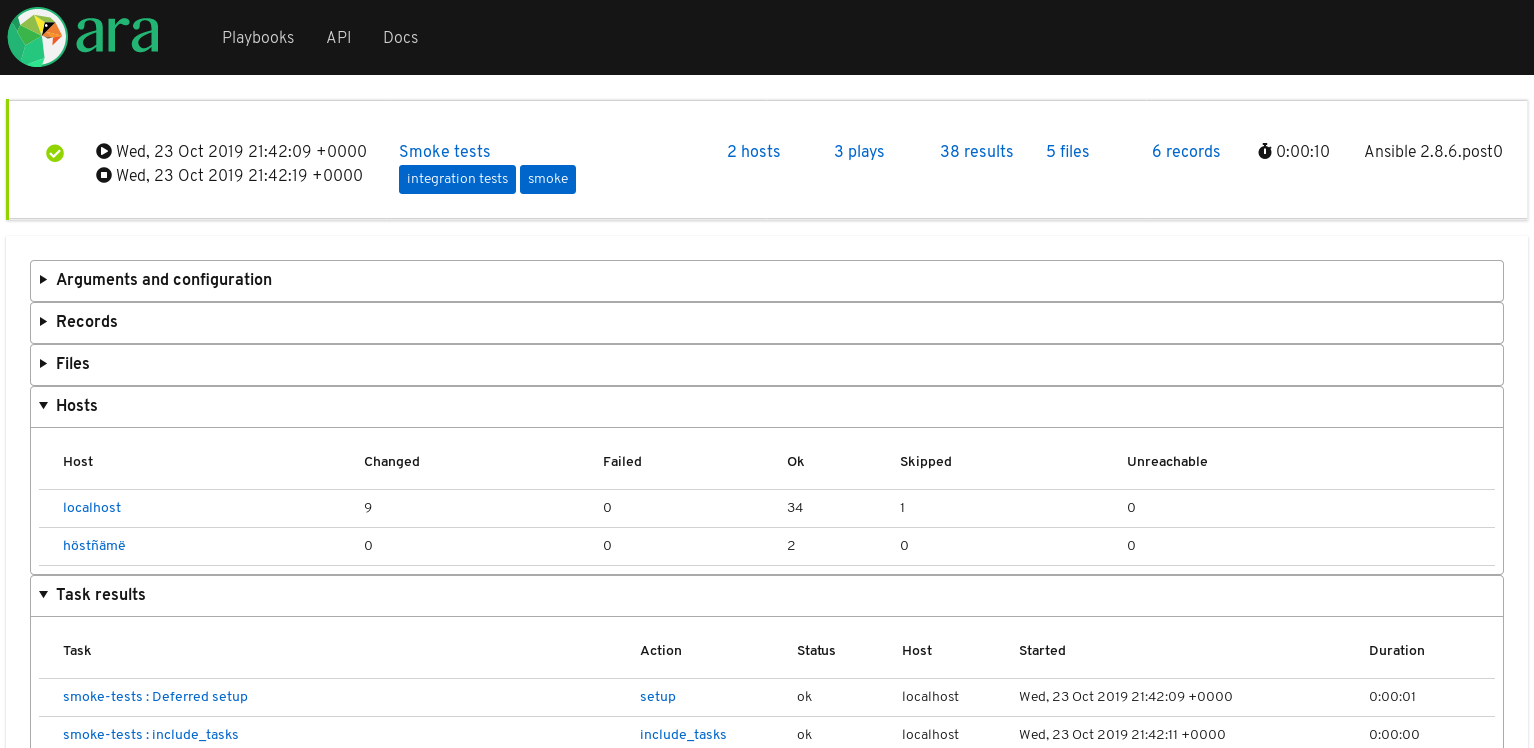ARA 1.2.0 has been released !
You can refer to GitHub repository for the changelog as well as the full list of changes.
Here are some of the highlights in this new version:
A simple built-in interface
Back by popular demand, ARA 1.2.0 re-introduces a built-in web interface included by default with the API server.

This new lightweight and simple interface is designed to work without any additional dependencies.
It is still very much a work in progress but we would love to hear about what you think about it !
You can find a live demo available at api.demo.recordsansible.org.
ara-web will continue to evolve over time but is in need of contributors knowledgeable in javascript to live up to it’s potential.
Static HTML generation
It is once again possible to generate a static HTML version of the built-in interface. This static HTML version contains all the files you need to serve reports from any web server.
The layout of the files has been slightly improved over ARA 0.x but it is still unefficient at scale due to the amount of files generated.
Static reports can be created using ara-manage generate <path>.
Performance improvements
ARA has a performance impact when recording your playbooks but we hope to keep this overhead as small as possible.
This release contains fixes to avoid doing unnecessary calls to the API during the execution of Ansible playbooks and we’re on the lookout to find other improvement opportunities in the future.
1.3 preview: searching, sorting, filtering
The next version will feature improved search and add support for sorting and filtering results through the API.
This means we will be able to implement these features in the built-in web interface as well as ara-web.
For example, here is an early iteration of a search dialog in the built-in interface:

Want to try ARA ?
Have a look at the quickstart or read the installation and configuration documentation for more information.
Want to contribute, chat or need help ?
ARA could use your help and we can also help you get started. Please reach out !
The project community hangs out on IRC and Slack.